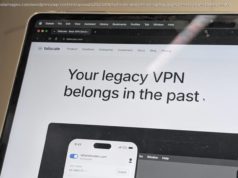If you own a 2017 iMac Pro or 2018 MacBook Pro, Apple requires proprietary software to repair your device, even if all you need is a new battery or keyboard replaced, which means only Apple and authorized service providers can fix your Mac.
Teardowns of Apple’s hardware have repeatedly revealed just how difficult it is to repair the company’s devices. Apple doesn’t want you to repair them, so why make it easy? But with the introduction of the T2 chip, Apple switched from deterring repairs to outright blocking them by anyone other than Apple authorized service providers.
The T2 chip is an 64-bit ARMv8 part that runs an operating system called BridgeOS. Apple first included the chip in the iMac Pro launched in Dec. 2017, where it serves a number of security purposes including protecting the boot process, securing encrypted keys, and handling system functionality such as access to the camera. The T2 has since been added to the MacBook Pro 2018 which launched in July.
As MacRumors reports, an internal Apple document reveals that in order to complete some repairs on the iMac Pro and MacBook Pro fitted with the T2 chip, a proprietary piece of diagnostics software is required. If Apple’s diagnostic software isn’t used, a system will be rendered inoperative.
For the MacBook Pro, the diagnostic requirement applies to display, logic board, Touch ID, and any top case repairs, which include the keyboard, trackpad, speakers, and battery. For the iMac Pro, the software is needed if a logic board or flash storage repair is performed.
As you’ve probably guessed, Apple only makes the diagnostic software available to its own stores and authorized service providers. So if you own an Apple device fitted with a T2 chip you won’t be able to carry out repairs yourself or take it to a repair shop that isn’t certified by Apple. What makes this worse is the fact that once Apple decides to stop supporting models fitted with a T2 chip in future, there will be no way to repair them. They will become dead products.
If the high cost of purchasing an iMac Pro or MacBook Pro wasn’t enough, this requirement for proprietary software during a repair puts a hard limit on the lifetime of a device. And it seems unlikely Apple will stop at just these two products, surely all future Macs will ship with a T2 chip fitted won’t they?
Blocking repairs ultimately leads to higher prices and enforces planned obsolescence. The best way to fight it is by supporting right to repair initiatives and bills such as the California Right to Repair Act. You could also choose not to buy Apple, but it seems unlikely enough people would be willing to do that for Apple to even notice.






